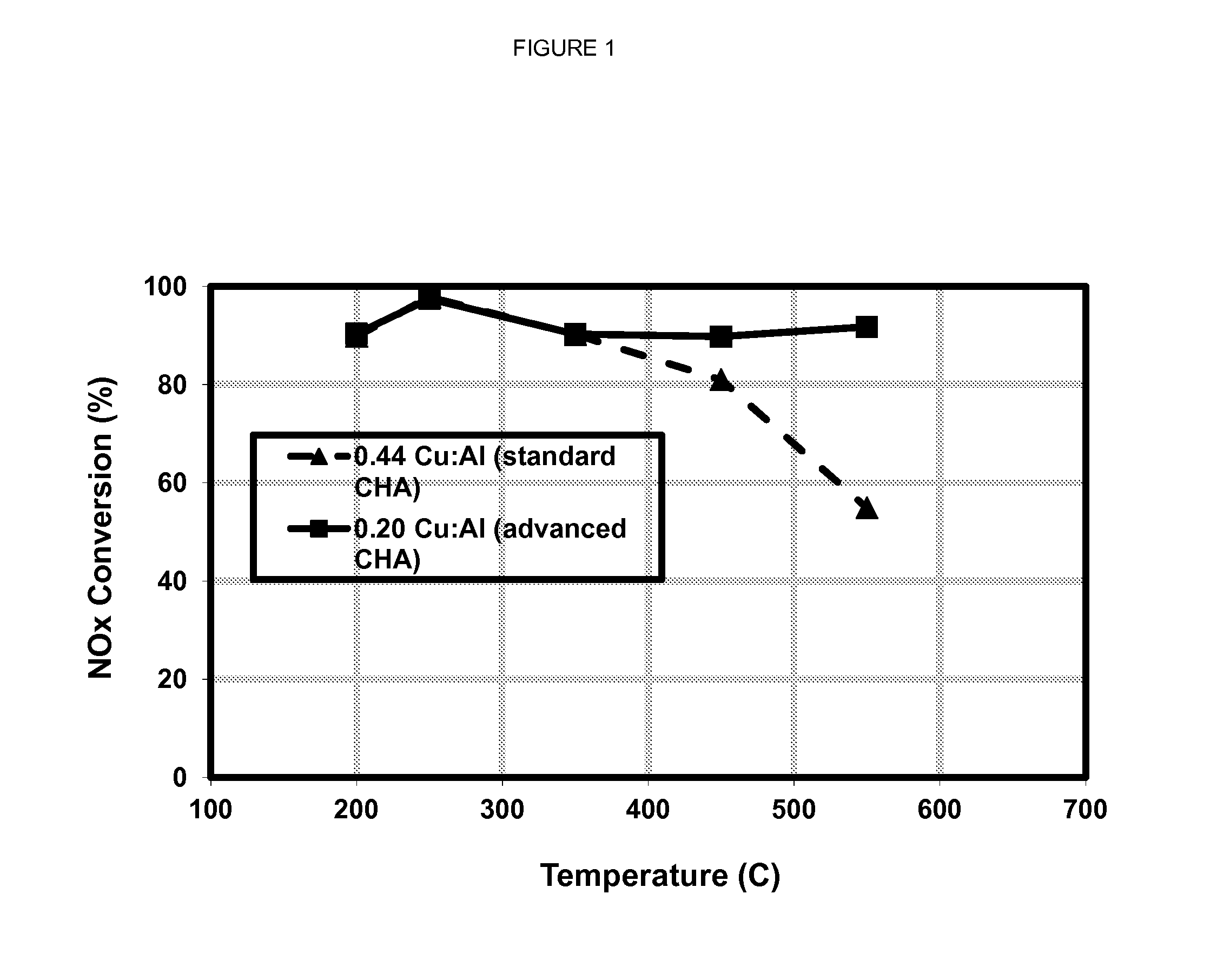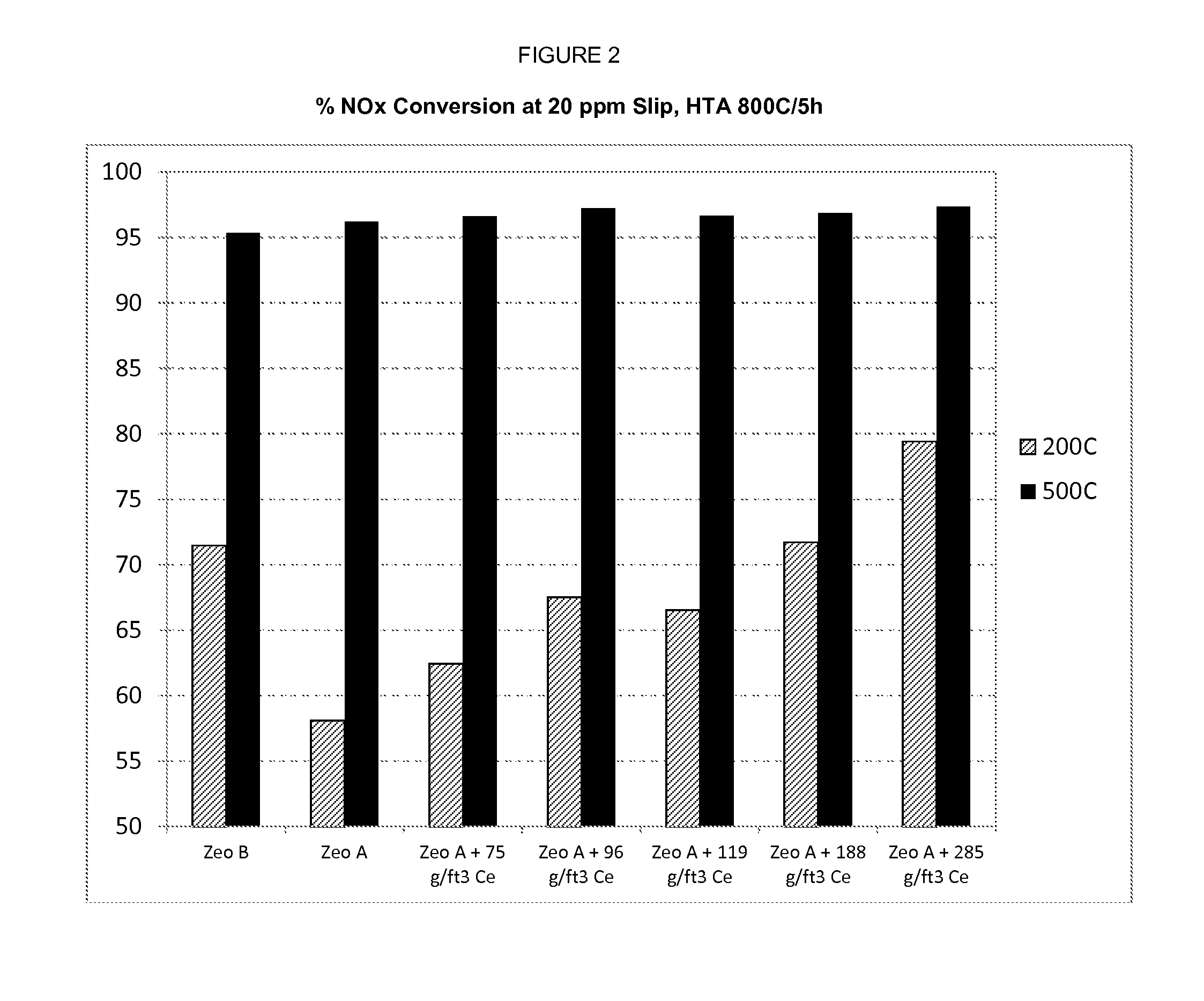Zeolite catalyst containing metal
a zeolite catalyst and metal technology, applied in the field of catalysts, systems, can solve the problems of reducing the number of nosub>x /sub>to nsub>2 /sub>in a lean burn exhaust gas, such as that created, and the performance of high copper-loaded catalysts is not as good at high temperature, and achieves good conversion, good selectivity, and good nox conversion
- Summary
- Abstract
- Description
- Claims
- Application Information
AI Technical Summary
Benefits of technology
Problems solved by technology
Method used
Image
Examples
example 1
[0064]A zeolite sample was prepared having CHA framework (isotype SSZ-13) and an SAR of about 17. The sample was loaded with copper to produce a catalyst material having a Cu:Al atomic ration of about 0.20. Following aging at about 550° C. for about 72 hours, the catalyst was exposed to a simulated diesel engine exhaust gas that was combined with ammonia to produce a stream having an ammonia to NOx ratio (ANR) of 1 and a space velocity of 50,000 per hour. The catalyst's capacity for NOx conversion was determined at temperatures ranging from 200° C. to 550° C.
example 2
[0067]An aluminosilicate having a CHA framework (isotype SSZ-13) having an SAR of 17 (zeolite A) and containing 2.4 weight percent of exchanged copper (based on total weight of zeolite) was impregnated with Ce nitrate using an incipient wetness technique and then washcoated on a substrate to produce a catalyst sample having 75 g / ft3 of Ce (1.35 weight percent Ce, based on total zeolite weight). The same technique was repeated to produced catalyst samples having the 96 g / ft3 of Ce, 119 g / ft3 of Ce, 188 g / ft3 of Ce, and 285 g / ft3 of Ce. Each of these samples was hydrothermally aged at 800° C. in 10% H2O for five hours. These samples were then analyzed to determine their capacity for NOx conversion in an NH3 SCR process at 200° C. and at 500° C., wherein the NH3 SCR process is tuned to allow 20 ppm ammonia slip. The results of this analysis are provided in FIG. 2.
PUM
| Property | Measurement | Unit |
|---|---|---|
| mole ratio | aaaaa | aaaaa |
| weight percent | aaaaa | aaaaa |
| particle size | aaaaa | aaaaa |
Abstract
Description
Claims
Application Information
 Login to View More
Login to View More - R&D
- Intellectual Property
- Life Sciences
- Materials
- Tech Scout
- Unparalleled Data Quality
- Higher Quality Content
- 60% Fewer Hallucinations
Browse by: Latest US Patents, China's latest patents, Technical Efficacy Thesaurus, Application Domain, Technology Topic, Popular Technical Reports.
© 2025 PatSnap. All rights reserved.Legal|Privacy policy|Modern Slavery Act Transparency Statement|Sitemap|About US| Contact US: help@patsnap.com


